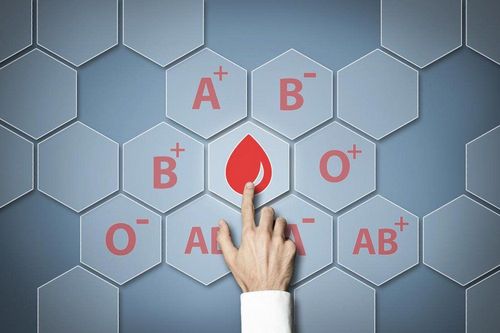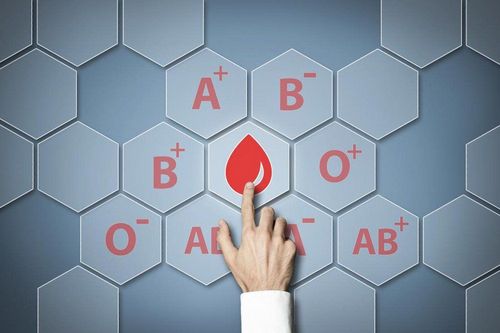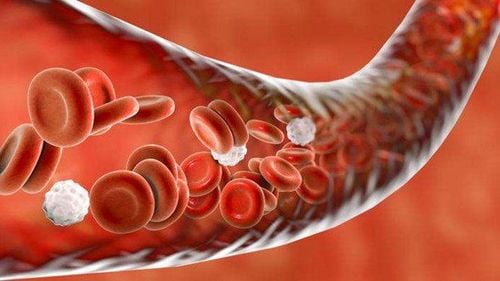This is an automatically translated article.
The article was professionally consulted with Senior Doctor, Specialist II Doan Du Dat - General Internal Medicine - Department of Medical Examination & Internal Medicine - Vinmec Ha Long International Hospital.Blood group is a group of red blood cells and is determined based on the characteristics of each different antigen. Blood type is inherited from father and mother, in fact there are many different blood types, but so far only 2 types of blood types are widely used. So what determines blood type in humans?
1. Blood group and blood groups
There are many different blood types, and each person's blood type is determined based on the types of antigens that are present on the surface of red blood cells. In the case of blood donation or receiving blood, the determination of blood type is very important because only people with a suitable blood type can receive a blood transfusion. That is, the donor and the recipient need to have the same antigens for the human immune system to not recognize the foreign blood cells and attack. If blood transfusions are different from antigens, the attack will occur, dangerous complications may even cause the patient to die. Therefore, determining the correct blood type is very important, especially for rare blood groups to serve in emergency work and medical examination and treatment.The nature of antigens are proteins located on the cells of red blood cells. The development of medicine has shown a variety of blood group systems, but so far widely used, there are only two basic blood group systems including: ABO blood group system and Rh blood group system. (Rh- or Rh+ blood group). In it, there are 8 muscle blood groups that are:
Blood group A + (Rh positive). Blood group A- (Rh negative). Blood group B+ (Rh positive). Blood group B- (Rh negative). Blood group AB+ (Rh positive). Blood group AB- (Rh negative). Blood group O+ (Rh positive). Blood group O- (Rh negative).
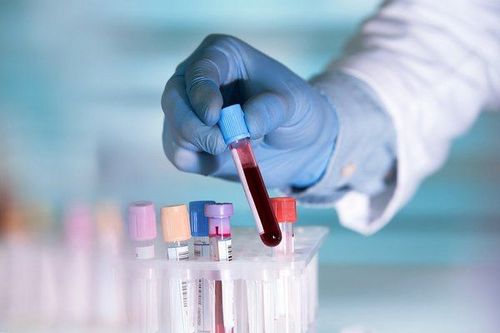
Trong những trường hợp hiến máu hoặc nhận máu thì việc xác định nhóm máu là rất quan trọng
2. What determines blood type in humans?
Is blood type related to bloodline? Blood group is determined by antigens present on red blood cells and blood group genes are inherited from parents in each specific case as follows:2.1. ABO Blood Group System For the ABO blood group system, a child inherits group A antigens from one parent and receives B blood group antigens from the other parent. The same is true if the child has blood type B (or A), meaning the child receives B (or A) antigens from both parents. But for people with blood type O, there are no antigens and it does not affect blood type A or blood type B. That is, if the child receives two antigens B and O (or A and O), both have group. blood B (or A). Only in the case where the child receives the O antigen gene from both the mother and the father will the group be OO blood (often called O blood group). Thus, the ABO blood group system will be divided into 4 basic blood groups: O, A, B and AB.
More specifically, the presence of A and B antibodies in the serum varies depending on the presence of A and B antigens on the surface of red blood cells.
People with blood type A: have A antigens on the surface of red blood cells, have B antibodies in their serum, People with blood type A can safely donate blood to other people with the same blood type A, or carriers blood group AB. In addition, people with blood type A can also receive transfusions from people with blood type O People with blood type B: have B antigen on the surface of red blood cells, have A antibodies in the serum, People with blood type B can safely donate blood to other people with the same blood type B, or to people with blood type AB. In addition, people with blood B can also safely receive blood transfusions from people with blood group O. People with blood type AB: have A and B antigens on the surface of red blood cells, no A and B antibodies. In serum, People with blood type AB can accept blood from anyone. However, because of the presence of both antigens on type AB red blood cells, people with type AB blood can only donate blood to people with the same AB blood group. People with blood group O: have neither A nor B antigens on the surface of the red blood cells, and both A and B antibodies in the serum. People with blood type O can only receive blood transfusions from people with the same blood type O. However, people with blood type O can donate blood to all other blood types 2.2. Blood group system Rh (Rhesus) Blood types will be further divided based on the Rh factor, which is also one of the antigens on red blood cells. If Rh antigens are present on red blood cells, it means that they are Rh positive (also known as Rh +) or Rh-. The Rh factor determines whether the blood group is positive or negative and is written immediately after the blood type name (eg blood group B+). Thus, when combined with the ABO blood group system, it will be further divided when each type can be Rh + or Rh -. Indicate that each individual has either presence or absence of the Rh D antigen, which is sparsely distributed on the surface of red blood cells. When the body has the Rh D antigen, it is said to be Rh+ (positive). If the body does not have the Rh D antigen, it is considered Rh- (negative).
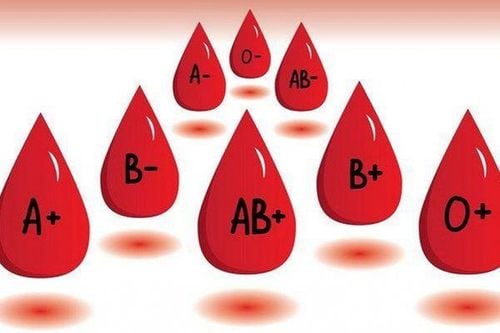
Việc xác định nhóm máu ở mỗi người là rất cần thiết và quan trọng
3. How to determine blood group?
Determining the blood type in each person is very necessary and important, helping to serve many different purposes, especially in receiving blood or donating blood in an emergency, or in medical examination and treatment... It is recommended to determine the blood group early to facilitate the declaration and emergency later. To determine the blood group, it is necessary to perform several types of tests to identify antigens on the surface of red blood cells.Also according to the basic blood group system, ABO and Rh, specific antigens will be searched and identified. In addition, when necessary, in addition to finding the ABO antigen, an Rh test may be performed, but is uncommon.
3.1 ABO blood group test ABO blood group test by looking for antigens in one of these 4 blood groups, including:
Blood group A: on the surface of red blood cells there are A antigens, in the plasma there are antibodies against ABO. B. Blood group B: on the surface of red blood cells there are B antigens, in the plasma there are anti-A antibodies. AB blood group: on the surface of red blood cells there are both A antigens and B antigens, copper There are no anti-A or anti-B antibodies in the plasma. Blood group O: there are no A antigens or B antigens on the surface of red blood cells, but both anti-A and anti-B antibodies are present in the plasma. anti-B. 3.2 Rh blood group test If Rh antigens are found on the surface of red blood cells, that person has Rh positive (+) blood group. Conversely, if Rh antibodies do not exist, then the person has Rh negative (-) blood group, which is a very rare blood type.
In short, determining blood group is very necessary and important in medical examination and treatment. So, if possible, do a blood group test for convenience in reporting and emergency later.
Please dial HOTLINE for more information or register for an appointment HERE. Download MyVinmec app to make appointments faster and to manage your bookings easily.




